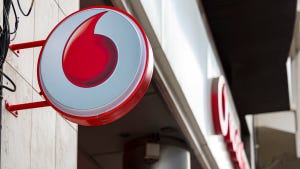
Frustrated by 3G's inadequacy, British consumers quickly piled into EE's 4G service after it was launched in October 2012. By December 2014, roughly two years after 4G's UK arrival, EE was able to boast 5.7 million 4G customers, an impressive achievement for a company that had fewer than 15 million contract customers in total.
Alas, it has not been able to pull off a repeat performance in 5G. With that service approaching its second anniversary on May 29, EE boss Marc Allera this week fired off a celebratory tweet about subscriber take-up. But the haul this time round is not 5.7 million customers, or even close to that number. Just 1 million have taken advantage of the high-speed technology since EE became the first operator to launch it.
Awesome news from my @EE team today:
— Marc Allera (@MarcAllera) April 26, 2021
We now have 1 million customers on our #5G network.
That's 1 million people using the UK’s number 1 5G network to connect them to the people and things that matter most. pic.twitter.com/13UvZG8NEq
The wonder is that EE, now a part of BT, has disclosed any numbers whatsoever. One of the last acts of former BT boss Gavin Patterson, succeeded by Philip Jansen in early 2019, was to scrap any mention of mobile customer numbers in financial reports. The odd move was all about drawing attention to more important metrics, insisted BT. But it smacked of less transparency.
Still, in March 2018, before it began hiding the details, BT had about 17.6 million customers on mobile contracts. Two years later, the annual revenue it generated from these customers had not changed, according to its earnings statements, although an average customer was spending slightly less each month. A relatively safe assumption would be that BT had around 18 million customers.
For a company of this size, 1 million 5G subscribers sounds underwhelming. South Korea's SK Telecom, which launched 5G in April 2019, boasted nearly 5.5 million customers by the end of 2020, equal to 19% of its entire customer base. In China, where 5G services were launched in November 2019, China Mobile recently laid claim to 93 million "active" subscribers, meaning one in ten mobile customers was on 5G.
Slow going
The coronavirus pandemic will not have helped BT to shift expensive, 5G-compatible phones. Relatively few have been available so far, and Apple did not enter the fray until October last year, when its iPhone 12 was released. That ranked as the most popular smartphone globally in January, according to Counterpoint Research, and seems bound to give BT and the UK's other 5G operators a boost this year.
The relatively slow pace of 5G deployment in the UK has probably hindered 5G take-up, as well. Along with other service providers, BT has been coy about network coverage as a percentage of the population, the traditional measure of availability. Its 5G service, it says, is now available in 160 cities and towns. But this does not mean they enjoy blanket coverage. Any location with more than 10,000 residents is listed if BT's service reaches a third of the population, including the city or town center.
Want to know more about 5G? Check out our dedicated 5G content channel here on Light Reading.
Contrast that with EE's race to extend its 4G network eight years ago. In October 2013, when 4G turned one year old, it was available to more than 60% of the UK population, said EE at the time. A year later it reached 98%, according to the operator. Rollout would not have been so fast, or 4G business so good, were it not for a peculiar regulatory decision to let EE re-farm 1800MHz spectrum for use with 4G while its rivals were made to wait for a government auction. In any case, 5G coverage will not even be close to that 98% figure. BT's claim to have 2.1 million "5G-ready" customers suggests some have the requisite phones and plans but live outside a 5G zone.
While O2 boasts 5G coverage in even more locations – some 180 cities and towns – BT does not appear to have lagged rivals on 5G rollout. Nevertheless, it is also under pressure to extend full-fiber networks to around 20 million UK properties by the mid-2020s, a project expected to cost £12 billion ($16.7 billion) and gobble resources. As an ageing fixed-line telco with a bloated workforce, BT has also been struck harder than other service providers by the coronavirus. Its revenues fell 9% over the first nine months of 2020, to about £16.1 billion ($22.3 billion), and its net profit slumped 16%, to roughly £1.3 billion ($1.8 billion).
Adverse regulation
Recent government decisions have added to BT's list of problems. A move last year to ban Huawei is forcing BT to rip out the Chinese vendor's 4G and 5G network equipment and replace it with products from Ericsson and Nokia. BT has estimated the cost of the overhaul at £500 million ($694 million) and previously warned that it would slow down 5G network deployment.
Spectrum uncertainty has been an additional factor. BT's two 5G allocations are separated by 100MHz of spectrum owned by Three. It says a single radio unit can span the range but is still open to a spectrum trade that would give it a larger contiguous block. Three appears to have little incentive to budge, though. If a deal is to happen, Gabriel Brown, a principal analyst with Heavy Reading, says it should ideally go ahead "before too much equipment is deployed." A spectrum trade between O2 and Vodafone announced this week means some radios might have to be replaced.
Take-up of 5G services so far has not stopped the slide in average revenue per user (ARPU) generated by contract customers. On a monthly basis, that figure has dropped from £20.7 when BT's 5G service was launched to £18.9 in late 2020. Its experience is not unique. Vodafone's contract ARPU is down from £18.1 to £16.8 over the same period and O2's has fallen from €24.9 to €22.1.
These figures might improve as more customers take advantage of 5G services, but market watchers are not optimistic. Operators were in as much of a hurry to market low-price 5G deals as they were to launch a 5G service. Nearly two years on, the 5G benefits to the companies that sell network services are far from obvious.
Related posts:
— Iain Morris, International Editor, Light Reading
Read more about:
EuropeAbout the Author(s)
You May Also Like











